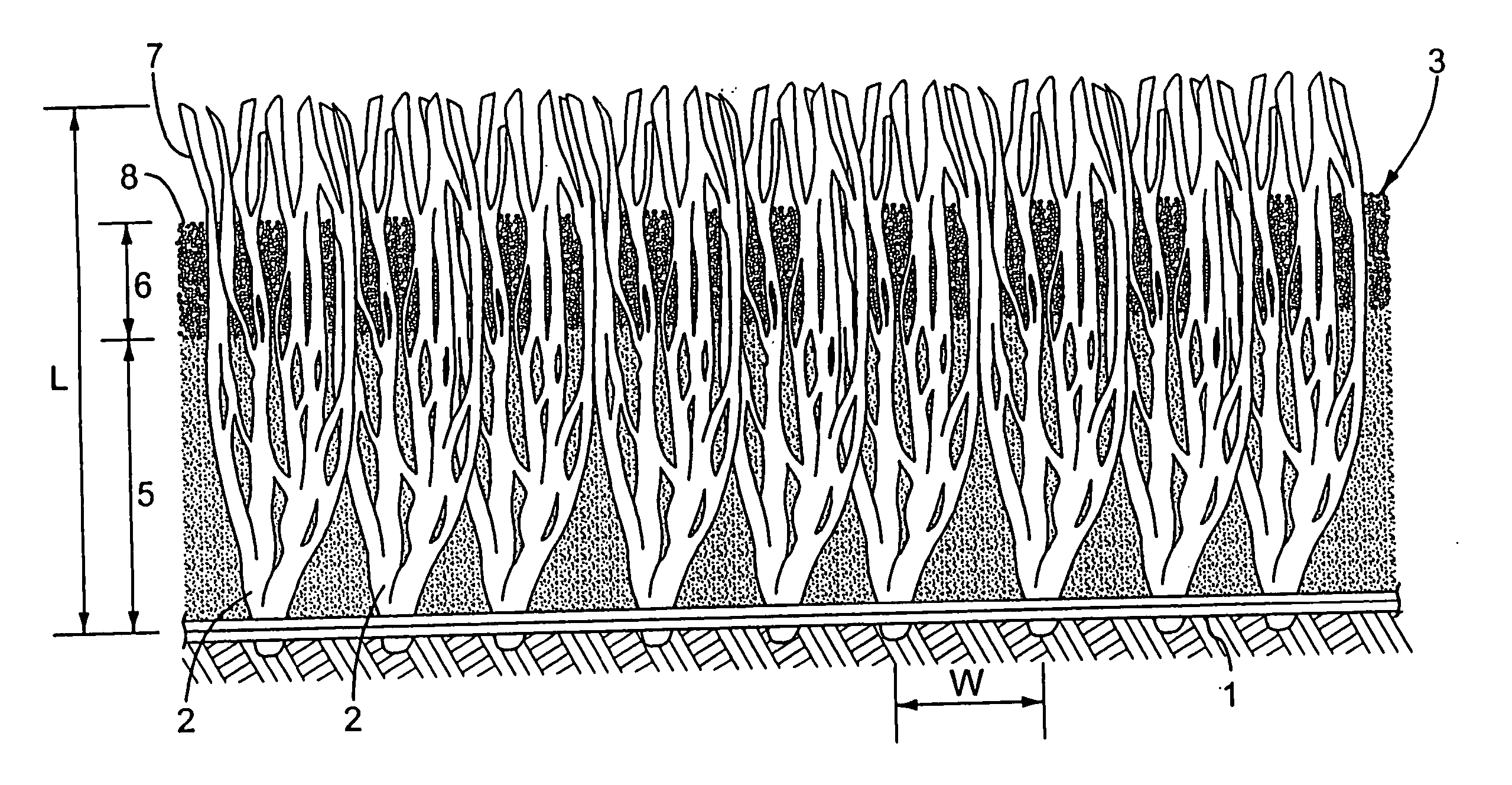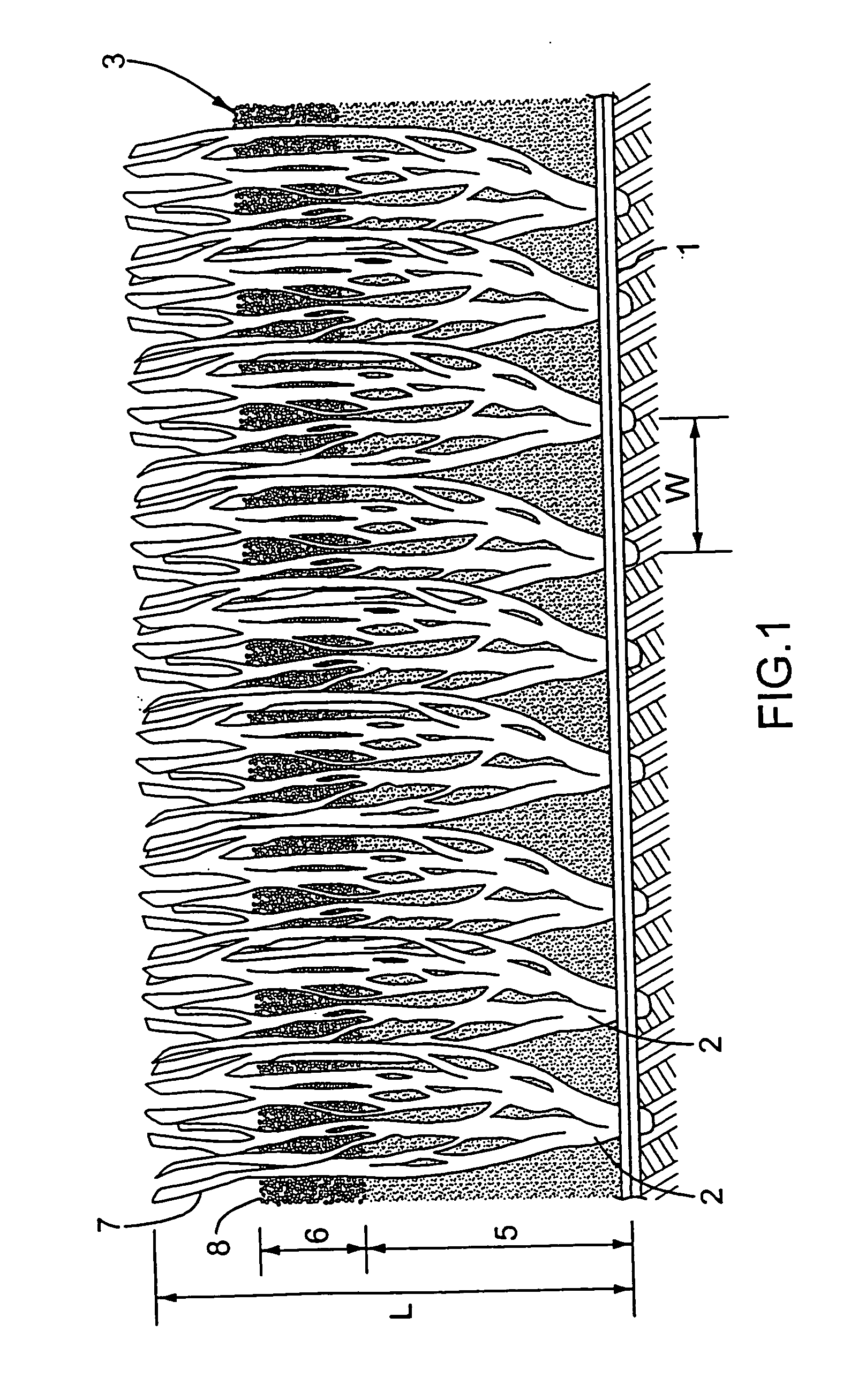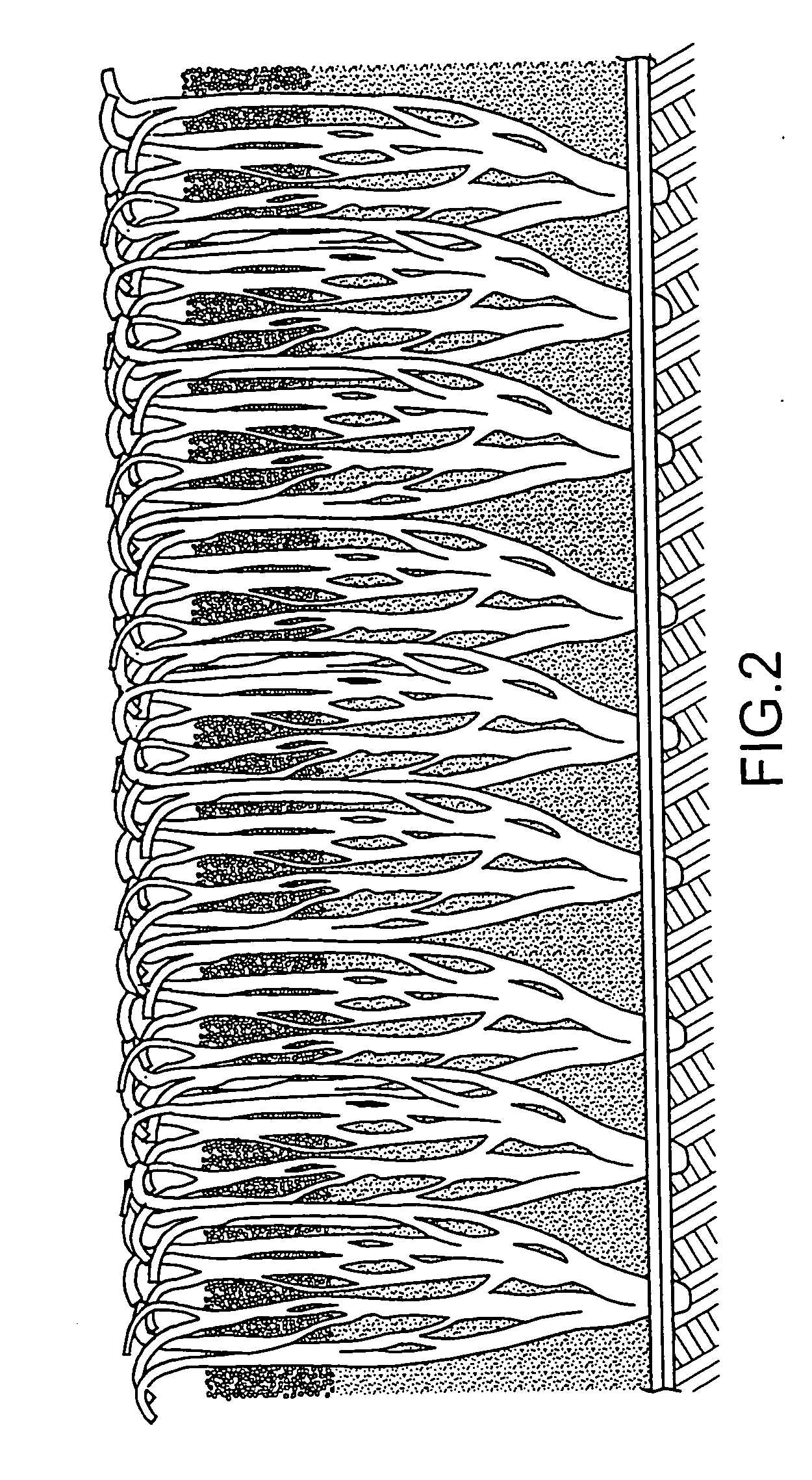Maintenance of natural grass turf on athletic playing or landscaped areas is expensive, natural grass does not grow well within shaded enclosed stadiums and continuous
heavy traffic wears out areas in the natural turf surface.
Natural turf surfaces deteriorate under heavy use and exposed soil creates an undesirable accumulation of water and mud.
A number of disadvantages result from the use of a uniformly mixed granular
infill as in the Haas
system where hard sand particles and resilient rubber particles are mixed and blended in a uniform proportion throughout the depth of the infill.
However, in both the Haas and Tomarin systems,
abrasive hard sand particles present in the top
surface layer of infill causes problems where such as games of football, rugby, soccer, field hockey, baseball are played since players repeatedly fall down or are knocked down on the playing surface.
In the case of conventional soil, the soil and
humus particles provide some natural resilience but the rebound is more gradual due to
moisture,
small particle size and relatively low natural resilience.
Over time, areas of continuous sand spray or
ball impact will result in visible sand on the playing surface.
It is considered undesirable to have light
colored sand visible in the synthetic grass surface and, especially when clouds of sand are visible on such impacts.
In addition, exposed
sand granules are highly
abrasive to the
skin when players fall or slide on the top surface, and could irritate eyes, ears,
nose and mouth when sprayed, inhaled or ingested.
A further
disadvantage of conventional infills is that
abrasive sand particles remain on the top surface of the synthetic grass and players on the surface who come in contact with the sand particles experience
skin abrasion.
The larger sand particles remain at the top of the granular layer and large particles are highly abrasive to
human skin relative to the smaller particles.
As a result, over time the abrasive nature of the synthetic
system is increased and may result in particular areas of the playing surface which experience
heavy traffic being more abrasive than other areas.
In addition, where a wide range of particle sizes is used, the smaller particles fill in the interstices between the larger particles and increase the degree of compaction.
When the infill is rained on or flooded, the air trapped by the lightweight rubber particles causes the rubber particles to float.
This is undesirable since the rubber may wash down a drain with the
surface water flow, and the floating rubber separates from the heavier sand in the infill mixture thereby leading to
particle segregation, sand compaction and loss of the resilience of the infill.
However, where sand is used as a component of a resilient infill between the interstices of synthetic grass, excessive compaction is highly undesirable.
A high degree of compaction of sand and
contamination of the infill by airborne
dirt and dust lead to unwanted changes in the resiliency of the infill over time as a result of use which may vary considerably over the synthetic grass surface from areas of high use to areas of low use.
Brushing increases the cost of maintenance, exposes synthetic ribbons to significant wear, and is at best a temporary solution since eventually the conventional infill compacts again and must be brushed regularly.
The proper choice of spacing between rows of grass ribbons has also proven to be problematic.
Quite often the major complaint of professional
athletes is that cleats on shoes do not release consistently from densely packed, matted, tightly woven or knitted synthetic sport grass surfaces, causing knee and
ankle injuries.
However, the cleats on athletic shoes often did not release properly especially when the foot was spun on the surface, thereby resulting in knee and
ankle injuries.
On the other hand, where pure sand is used as a surface, in equestrian surfaces for example, the surface is relatively unstable and sand particles displace easily.
Without the synthetic ribbons, the loose particles would be very difficult to run on much like a
dry sand natural beach surface whereas a dense mat of fibers would ensnare the cleats preventing release and possibly causing personal injury.
When the ribbons are densely packed together, the cleats cannot release properly, but when the ribbons are spaced too far apart, adequate traction and stability is not available.
Due to the high cost of artificial grass installations, and risk of injury to
highly skilled and highly paid
athletes, a predictable and reproducible artificial grass performance is required.
As a result when flooded, the rubber particles of some conventional installations have floated on the surface of water draining off the synthetic grass surface.
Rubber particles drain away or are displaced resulting in areas of the synthetic grass which have depleted infill thickness.
A lack of uniform infill thickness and resilience across the surface can result in injuries and liability for the owner of the athletic field.
 Login to View More
Login to View More 


